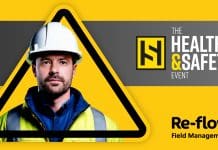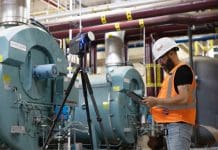Once upon a time there was no recession, house building was flourishing and multifoils were the `new kids on the block’. These versatile multi-layer insulation products, combining core insulation layers with mirrored surfaces, referenced NASA, ultrasonic manufacturing technology and infra-red heat reflection in their credentials. They were a revolution to roof refurbishment and new build projects.
Yet despite this they were shrouded in suspicion from the start, due mainly to some early unscrupulous selling practices which led to Building Control negativity and confusion about how they should be installed and they were initially expensive. Jump ahead to 2015 and multifoils and thin reflective insulation are becoming commonplace in house construction and building renovation. Here
Mark Seddon, director of Thermic Technology outlines what has come before and where these clever products are now.
Where it began
From the moment multifoils `set out their stall’ performance statements were questioned, leading to confusion about their application. Some unsubstantiated claims from manufacturers tainted initial uptake – the biggest of which was that 30mm of multifoil insulation would deliver the equivalent U-value (0.2) to 200mm of glass wool.
While conventional product testing proved it didn’t, over time, careful positioning of multifoils, when combined with PIR or glasswool, started to help their acceptance only for price to be seen as a further obstacle to uptake especially as the construction market felt the full force of recession.
Building Control remained a stumbling block throughout in some parts of the country. Preference to certain products and confusion over the true benefits and correct multifoil installation practice meant acceptance was a very slow process.
BCOs still required a BBA (British Board of Agrément) certificate as proof of performance and it wasn’t until 2009 when LABC revisited the issue and introduced its own Registered Details that greater acceptance of their use and understanding of their benefits started to been seen.
Registered Details
LABC Registered Details is a practical certification process proving compliance with building regulations and standards across England and Wales. Registering a product with LABC increases industry confidence and reliability of the manufacturer.
It also helps to ensure acceptance by all local authorities and makes the building control process faster, easier and cheaper by simplifying the submission route and providing a ready-made library of rigorously checked systems and products for specifiers.
Yet still the regulation of multifoils continued to be an issue with further unsubstantiated claims based around different product testing. It was around this time that Thermic Technology was established with the single aim of developing a simple to understand, trusted, cost effective thin reflective insulation. At the time the new British and European test standard for reflective insulation products – EN16012 – was being written.
PhotonFoil and PhotonAir
At Thermic Technology, we saw this development as an opportunity to design a product specifically to meet the new standard. Having spent many years relying on the use of multilayer product we stripped our thinking back to basics and turned to a traditional insulation for a very simple and trustworthy solution.
In designing PhotonFoil, our original thin reflective insulation, we chose to use a high density glasswool as its core. This was encased in very low emissivity outer layers giving it several benefits over polyester based multifoils. In particular PhotonFoil is easier to cut, screws without snagging, and gives a better λ90/90 thermal performance. It is also an excellent vapour and air leakage barrier.
The glasswool core provides the necessary insulation and thermal properties to meet EN16012. While encapsulating it makes it a product that is easier to handle and install and gives it a 21st century makeover.
With plenty of experience and understanding as to how these products are installed we also looked at some functional elements, designing PhotonFoil with flaps, to avoid a double thickness overlap which other multifoil manufacturers haven’t addressed. In practice battening down 60mm plus of insulation is a major installation issue but thanks to flaps across each edge of the product this no longer is a problem as even with overlap the product remains at a manageable thickness.
Earlier this year, we answered the call for a breathable thin reflective insulation and PhotonAir was born. Also constructed with high density glasswool at its core, but this time encapsulated between Klober Permo® air and a perforated reflective lower layer. With a unique air-open feature, making it more breathable than other insulating breather membranes (air-open membranes allow more water vapour to pass than air-closed*) PhotonAir has already achieved LABC registered Details.
The future
LABC Registered Details and EN16012 have helped `wipe the slate clean’ for multifoils and thin reflective insulation. For Thermic Technology, they have led to the development of a product range that tackles the three major confidence obstacles they originally created – building control approval, trusted performance and lower cost products.
The next generation of thin reflective innovative insulation is here and by working with the best features of existing technologies we are promoting less hype and more insulation fact.
For further information about Thermic Technology and its Photon product range visit www.thermictechnology.co.uk or https://www.linkedin.com/company/9187779?trk=tyah&trkInfo=clickedVertical%3Acompany%2Cidx%3A1-1-1%2CtarId%3A1433863954688%2Ctas%3Athermic%20technology.
Mark Seddon is a director with Thermic Technology and has been at the forefront of the multifoil insulation industry since 2007, understanding how to create cost effective, thermally enhanced insulation products.
Mark can be contacted via LinkedIn: https://www.linkedin.com/pub/markseddon/18/b98/4b3 or by email: mark.seddon@thermictechnology.co.uk.
*NHBC accepts the use of membranes certified as both air and vapour-open without the requirement for supporting ridge or high level ventilation.
For further information contact Sally Neary at Thermic Technology 01257 241084/07703546063 sally.neary@thermictechnology.co.uk .
Mark Seddon
Director
Thermic Technology
Tel: +44 (0)1257 241084
mark.seddon@thermictechnology.co.uk













